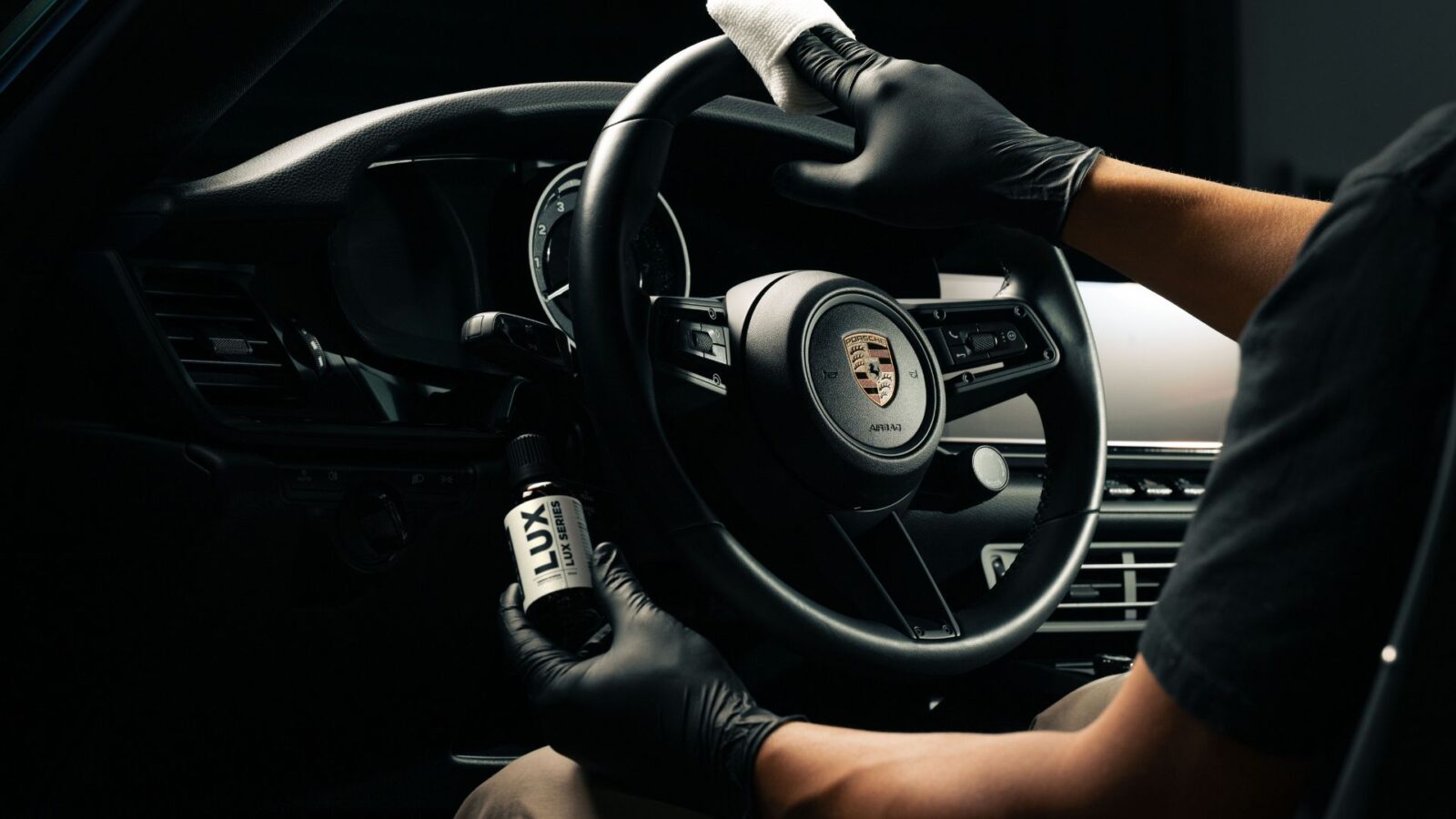Your car’s interior goes through a lot—sunlight, spills, dirt, oils from your skin, and daily friction all take their toll. Whether you’re commuting, road-tripping, or chauffeuring kids and pets, your vehicle’s interior is constantly exposed to damage. But the good news? There are smart, professional ways to keep your cabin looking and feeling new for years.
In this blog, we’ll explore the best ways to protect your car’s interior from daily wear and tear, including interior ceramic coatings, window tint, and regular professional detailing. We’ll dive into what each solution offers, their pros and cons, and why a combined approach might be your best move.
Before we get into specific solutions, let’s answer a simple question: Why is protecting your car’s interior so important?
Whether you drive a brand-new luxury vehicle or a daily commuter, protecting your car’s interior is just as important as maintaining its engine or paint.
Professional auto detailing is more than just a car wash. It’s a deep-cleaning process that restores and maintains the condition of your vehicle’s interior—every surface, nook, and cranny.
You might think of window tint as purely aesthetic, but it’s actually one of the best ways to protect your car interior from UV damage and heat-related wear.
Interior ceramic coatings are the latest in high-tech vehicle protection—and they’re not just for your paint. These nano-ceramic formulas create a durable, invisible shield over interior surfaces like leather, plastic, fabric, and even glass.
While each method offers powerful benefits on its own, the real magic happens when you combine them. Here’s how a professional protection plan might look:
Think of it like a three-layer defense system. Detailing cleans. Tint shields. Ceramic coatings protect. Together, they help you extend the life of your car’s interior, reduce maintenance costs, and enjoy a cleaner, more comfortable ride every day.

Understanding why your car’s paint chips easily comes down to acknowledging the limitations of automotive paint itself. Despite advances in paint technology, chips are inevitable. Premium brands like Mercedes offer better resistance due to their sophisticated painting processes, while lower-cost brands typically cut corners here, leading to quicker and more noticeable damage.
Vehicle shape and height also matter, with lower, aerodynamic cars showing chips more visibly and frequently than SUVs. Ultimately, regardless of vehicle brand or type, paint chips are an unavoidable part of vehicle ownership.
The only genuine solution is preventive: applying Paint Protection Film as early as possible. By investing in PPF, you shield your car’s delicate clear coat, maintaining its beauty, preserving its resale value, and significantly reducing future maintenance costs.
In the battle against rock chips, PPF isn’t just the best defense—it’s really the only one.
© 2025 Ceramic Pro. Privacy Policy · Terms & Conditions · Return Policy
